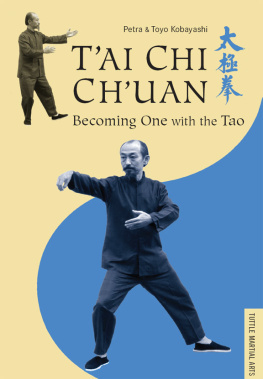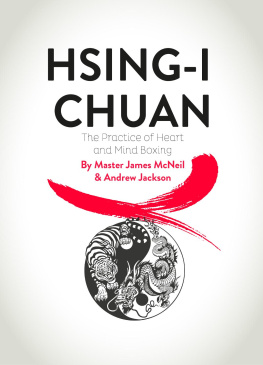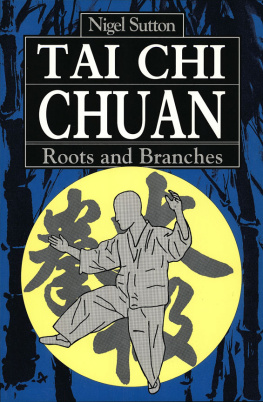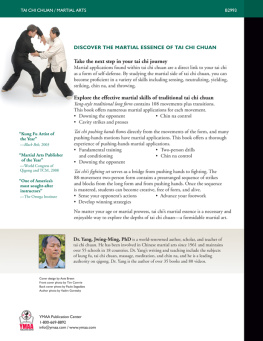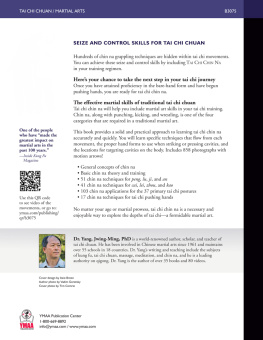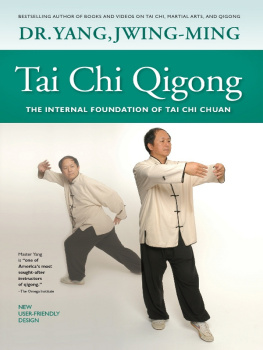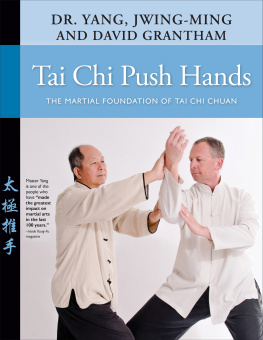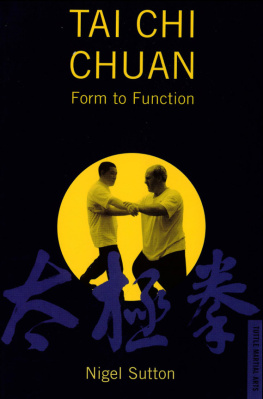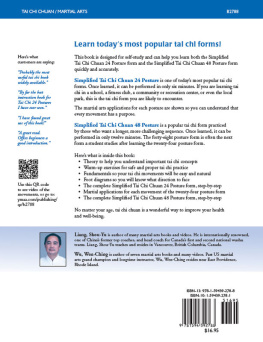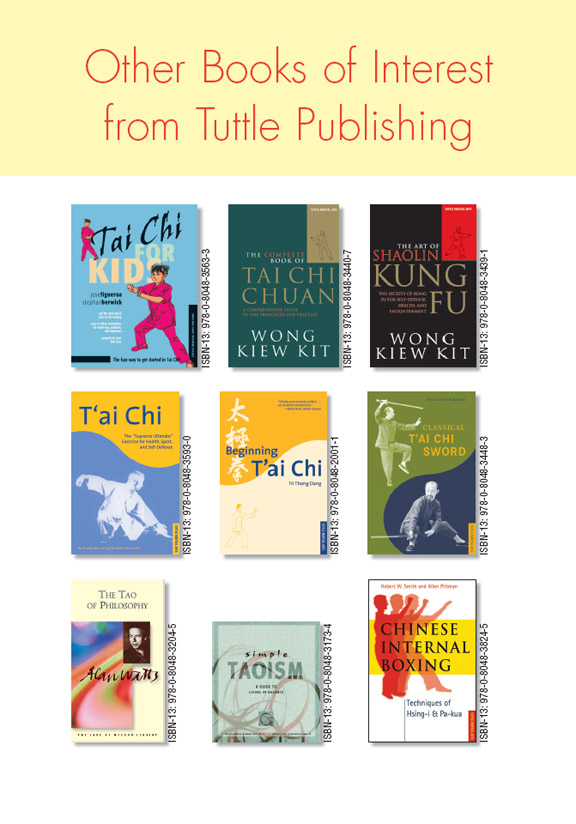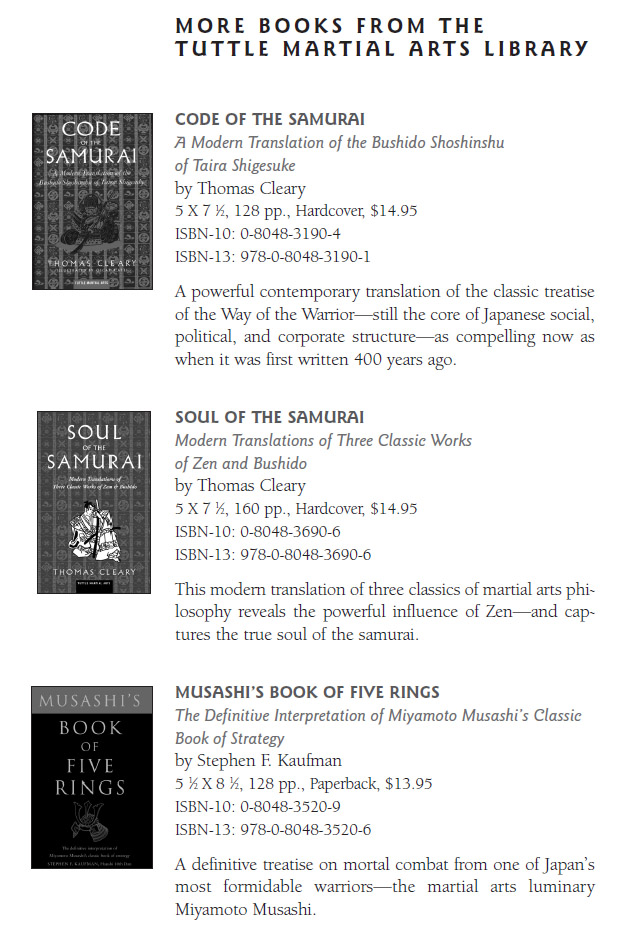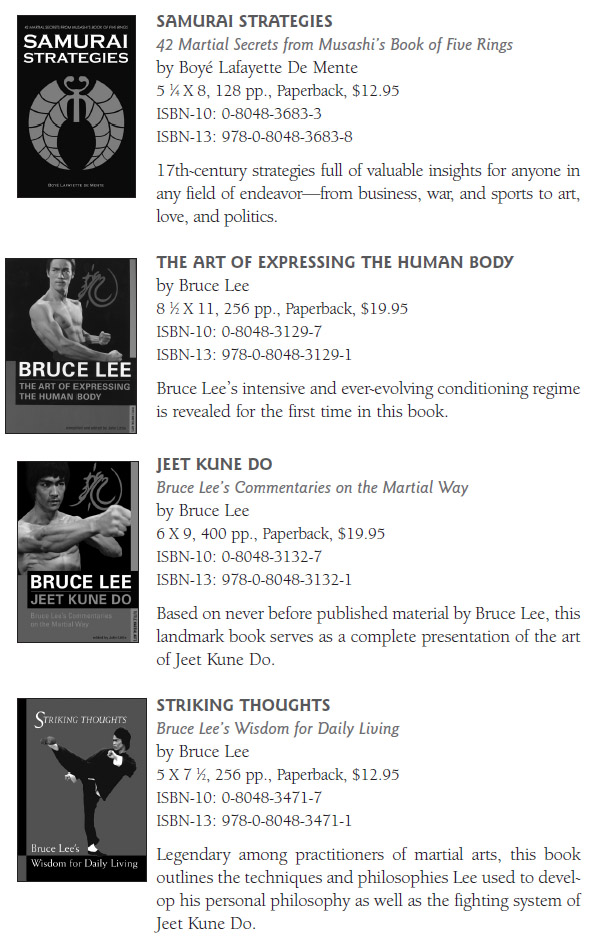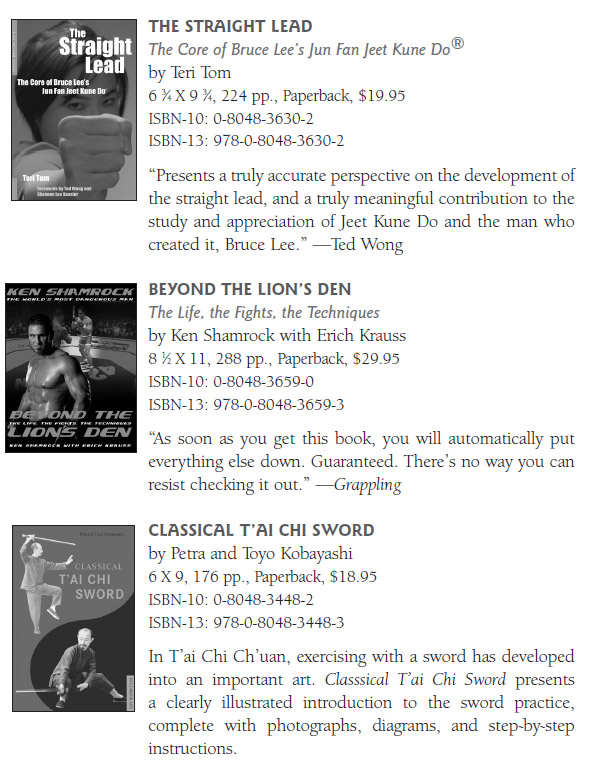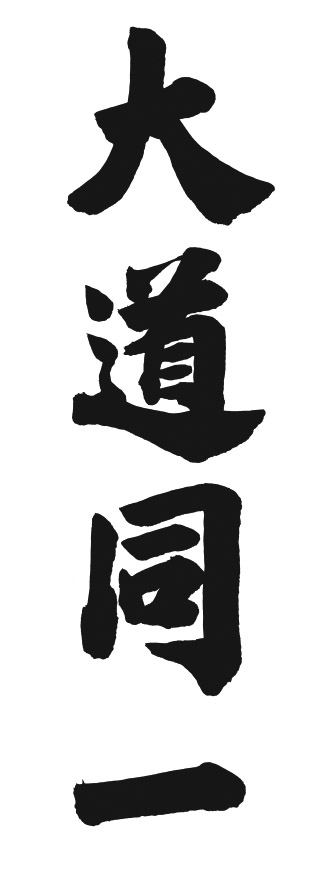Our special thanks go to Swantje Autrum-Mulzer for the photographs; Maste Lai Fung, Amsterdam, for the calligraphy; Peter Ebenhoch and V. Yelesejew for the drawings; Beatrix Schumacher, Janni Andriss, Jrg Lackner, and our daughters Ssu and Dhyana for their assistance; and Susan Rae Polzer for the English translation and help with the revision.
BIBLIOGRAPHY
Buber, Martin, comp. Reden und Gleichnisse des Tschuang-Tse. Frankfurt: Insel
Taschenbuch, 1981. (Available in German only.)
Cheng Man-Ching. Advanced Tai Chi Form Instructions. Douglas Wile, comp. and trans.
Brooklyn: Sweet Chi Press, 1985.
. Cheng Tzuss Thirteen Treatises on Tai Chi Chuan. Benjamin Pang Jeng Lo and
Martin Inn, trans. Berkeley, CA: North Atlantic Books, 1985. (New translation from the original Chinese of the Thirteen Chapters on Tai Chi Chuan.)
. Thirteen Chapters on Tai Chi Chuan. Douglas Wile, trans. Brooklyn: Sweet Chi
Press, 1982.
Cheng Man-Ching and Robert Smith. Tai Chi: The Supreme Ultimate Exercise for
Health and Self-Defense. Rutland, VT: Charles E. Tuttle Co., 1967.
Chen Wei-Ming. Tai Chi Chuan Ta Wen: Questions and Answers on Tai Chi Chuan.
Berkeley, CA: North Atlantic Books, 1985.
Huang Wen-Shan. Fundamentals of Tai Chi Chuan. Hong Kong: South Sky Book
Company, 1973.
Jou Tsung Hwa. The Dao of Taijiquan: Way to Rejuvenation. Rutland, VT: Charles E.
Tuttle Co., 1989.
Kobayashi, Petra. Der Weg des Tai Chi Chuan. Munich: Hugendubel Verlag, 1984.
(Available in German only.)
Kobayashi, Toyo and Petra. Tai Chi Chuan: Handbuch zum Selbststudium. Munich:
Hugendubel Verlag, 1979. (Available in German only.)
Matsuda. History of the Chinese Martial Arts. Tokyo: Shinjinbutsu Oraisha. (Available in
Japanese only.)
. Secret of Chin Jia Tai Chi. Tokyo: Shinjinbutsu Oraisha. (Available in Japanese only.)
Wile, Douglas, trans. Tai Chi Touchstones: Yang Family Secret Transmissions. Brooklyn:
Sweet Chi Press, 1983.
1. The Styles
I n the following section, the most well-known of the ten main styles of Tai Chi Chuanthe Chen-, Yang-, Sun-, Wu-, and Peking-styleswill be briefly described. They represent different combination possibilities of the exercises. Their forms differ from each other through, among other things, changing the placement of the arms and the legs within the framework of the principles as well as various sequences of the positions.
Chen-Style
The oldest known style of Tai Chi Chuan is the Chen-style. had Tai Chi Chuan passed down to him from Wang Tsung-Yueh from the Ming dynasty (13681644).
According to the other version, Chen Wang-Ting developed the Chen-style himself from the basis of the well-known book Chuan Chin and his own knowledge of Taoist meditation practices.
Exceptional masters of the Chen-style after Chen Wang-Ting were Chen So Kao, Chen Ching Po, and Chen Chang-Hsiang (17711853).
Until Chen Chang-Hsiang, the Chen-style was only handed down within the extended Chen family. He was the first to instruct an outsider, Yang Lu-Chan, the founder of the Yang-style.
Well-known masters of the Chen-style after Chen Chang-Hsiang were Chen Yi-Hsi and his son, Chen Fa-Ku (18871957). It is said about Chen Fa-Ku that his Chi (inner energy) was so strongly developed that window shutters and roof shingles rattled when he practiced. He taught in Peking and had many students.
There are three main directions within the Chen-style:
1. Old style
2. New style
3. Small style
1. The old style refers back to Chen Chang-Hsiang. It is practiced with deeply bent knees. The arms and legs depict large circular arches. The old style contains a series of difficult to perform motions, such as high jumps. The speed is usually a steady slowness; exceptions, in addition to the jumps, are the fist and feet thrusts. These are emphasized and performed rapidly.
2. The new style refers back to Chen Yu Pen. He simplified many of the complicated motions of the old style.
3. The small style was developed by Cheng Ching Ping, who studied with Chen Yu Pen. Economical movements are characteristic of the small style. It is practiced relatively fast.
Yang-Style
Yang Lu-Chan (17991872) developed the Yang-style, which is named after his given name, Yang, which means the unsurpassable. His family name was actually Yeung. The spread of Tai Chi Chuan is especially attributed to him. He wanted to make Tai Chi Chuan available to many people. Through his public teaching, he broke with the old tradition in which martial arts, meditation practices, and often also exercises for health were only passed on to a small, select circle of students or within the family. Following his example, the masters of the Chen-style also began to make their knowledge available.
Yang Lu-Chans form has not been handed down. Both his sons, Yang Pan-Hou (18371892) and Yang Chien-Hu (18391917), changed his form.
Yang Chien-Hu is said to have reduced the size of the movements. Yang Pan-Hou, however, is said to have practiced with wide-reaching movements. Yang Chien-Hus son, Yang Cheng-Fu, was the first to put together the so-called traditional form of the Yang-style. It has been handed down through photographs and drawings; most of todays Yang-style forms are taken from Yang Cheng-Fus long form. His student, Cheng Man-Ching (19001975), developed the short form of the Yang-style from the long form of his teacher (see page ). His comparatively easy-to-learn short form has contributed considerably to the spread of Tai Chi in modern times.
Wu-Style
Wu Chien-Chuan (18701942) is considered the founder of Wu-style, which is named after him. But his father, Wu Quan-You (18341902), who studied with Yang Pan Hou, also played an important role in the development of the Wu-style. Wu Chien-Chuan taught in Shanghai. The Wu-style is still widely known in Shanghai and the surrounding area.

